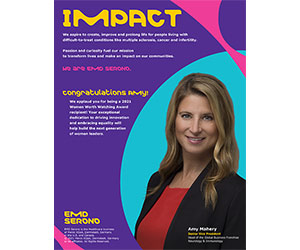by Trevor Wilson
Author and Global Human Equity Strategist
TWI Inc.
The Equity Continuum© was first introduced in the book Diversity at Work: The Business Case for Equity over a decade ago. Since that time this simple measurement tool has evolved into an industry-recognized methodology to allow organizations to rate their approach to diversity, inclusion and human equity using a single yardstick. For the past five years the continuum has been used to benchmark hundreds of organizations that apply to win Canada’s “Best Diversity Employers Award,” the largest competition of its kind in North America.
A few months ago, one of our most progressive clients indicated that they wanted to move to a “four” on the Equity Continuum. Actually they wanted to be the first “four” in North America because the highest score awarded in the competition so far is 3.79. My response to this request was, “Be careful of what you ask for.”
Moving to a “four” may appear reasonable after achieving a “three,” but there are plenty of hidden obstacles. Perhaps the most vexing is the required shift in focus beyond the group to the individual. In a “four,” leaders in the organization are more concerned with talent differentiation of each employee rather than under-representation of any diversity group. This could threaten the raison d’etre of every diversity advocacy group established over the past twenty years.
For the past two decades, the groups surrounding various diversity dimensions have become quite institutionalized. Separate diversity fiefdoms exist for women, minorities, gay men, lesbian women, new immigrants, parents of kids with special needs and (insert your group here). The Catalyst organization is approaching its 40th anniversary of fighting for the better representation of women at senior levels. Well-established advocacy groups inthe African American, Latino, Asian, LGBT, etc.,—are fighting for the representation of their respective groups. Thus, any program that puts the individual before the group is likely to generate suspicion if not criticism.
“In order to achieve total human equity we must avoid this temptation to assess one group’s inequity against another.”
I have labeled this condition the hierarchy of inequity. It is the notion that the unfair treatment of white females is somehow more important than the exclusion of black males. And for sure the experiences of these two groups must be much more critical than the age discrimination faced by a straight, white, able-bodied male over the age of 55. This is just not true.
We must learn to approach this issue from a perspective of what the great Nelson Mandela calls “rainbow jurisprudence.” We must deal with inequity wherever we find it, regardless if it is inequity being faced by some group other than our own.
Avoiding the hierarchy of inequity is another advantage of moving beyond diversity and inclusion to human equity. By focusing on the talents of an individual, we move beyond the obsession with righting wrongs and shift to focusing on maximizing the talents of the entire workforce.
This article has been sponsored by:
TWI Inc.
In 1996 Trevor started TWI Inc. to specialize in the area of equity and diversity as a business issue. In the same year, Trevor published a highly acclaimed book titled Diversity at Work: The Business Case for Equity. The firm’s clients include some of the most progressive global employers. TWI’s Human Equity™ approach was instrumental in catapulting Coca-Cola’s South African division to the top performing division worldwide. Visit www.twiinc.com for more information.






